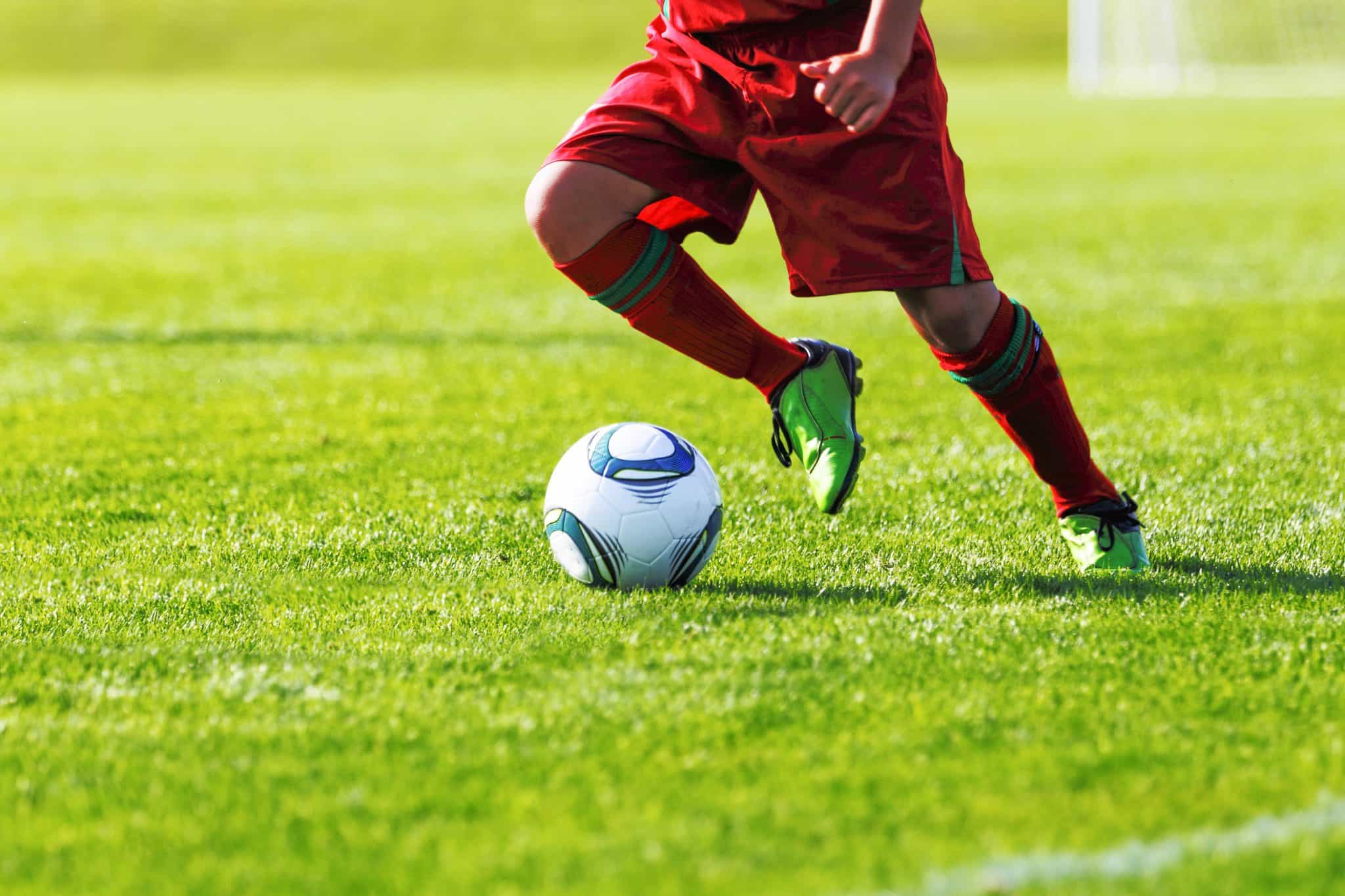Ball control is the most important soccer skill.
If you can’t control the ball, you can’t do anything.
This article will cover the four touches you need to control the ball and some tips to improve your ball control.
The 4 Types of Soccer Touches
Lace
Use the lace touch to dribble forward or diagonally.
You will dribble quicker with the lace touch than the inside touch. Use it to move into open space.
To perform a lace touch, lift up your knee, point your foot downward, lock your ankle, then touch the ball with your laces.
Inside
Use the inside touch to move horizontally, turn, and to dribble while shielding the ball (covered in our article, How to Dribble a Soccer Ball).
To perform an inside touch, move your leg outward slightly, lock your ankle, then touch the ball with the middle of the inside of your foot.
The ball should go across your body. If the ball goes too far in front of you or too close to you, adjust the angle of your foot.
Outside
Use the outside touch to accelerate past defenders, turn, and cut to the side.
This touch is quick and choppy like the lace touch.
To perform an outside touch, move your leg inward slightly, lock your ankle, then touch the ball with the middle of the outside of your foot.
Sole
The soul touch is used to turn, beat defenders, and move in all directions.
The soul touch is underused. I’ve seen great players use this touch to devastate defenses. It’s the hardest touch to master, but learning it is worthwhile.
To perform a sole touch, put your foot lightly on the ball. Roll the ball to the side. Perform a small hop with your other foot while rolling the ball. To use the sole touch to move forward, turn your body to the side.
Soccer Ball Control Tips
1. Learn ball control first
Learn how to control a soccer ball before focusing on dribbling, receiving the ball, and other skills.
Master ball control, and you will become better at every skill in soccer.
2. Stay on your toes
Do you feel sluggish while controlling the ball?
If so, you’re landing on your heels rather than the balls of your feet.
Stay on your toes.
3. Keep the ball close
If you let the ball get away from you it will get stolen by defenders.
Use small choppy touches to control the ball. You will move slowly at first, but you will get faster and faster (while keeping control of the ball) as you practice.
Keep the ball close. The ball should be glued to your feet.
4. Remember your place foot
When learning ball control, pay attention to your place foot (the foot not controlling the ball).
Your place foot affects your balance and momentum. It should always be a few feet away from your other foot.
When your place foot moves naturally to the right position (takes practice) you will become graceful and quick when controlling the ball.
5. Train both feet
You should practice every skill with both feet.
But if I had to choose only one skill to practice with both feet I would choose ball control.
You become effective on the pitch when you can control the ball with both feet. You can move and cut in any direction.
A common defending tactic is “force the player to control the ball with his weak foot.” If you don’t have a weak foot, defenders will have a hard time marking you.
Training your weaker foot is frustrating but worth it. You will get an edge over players that didn’t put in the extra effort.
6. Use every touch
You become deadly when you can use every touch.
You can quickly cut away from players with an outside touch, roll the ball away from defenders, dribble with speed and control, and turn easily.
Master all 4 touches and you will become an effective player.
7. Warm up with ball control drills
Most players don’t like practicing ball control.
It can be tedious and frustrating.
Focus on the the hardest, most important skill at the beginning of a training session because you have more energy and focus.
So warm up with ball control for 15 to 30 minutes (after doing a brief active warmup). You will get ball control over with, over 1000 touches, loosen up your body, and get in some cardio.
Warmup with our favorite [ball control drills] every training session. Your ability to control a soccer ball will improve quickly.
8 Juggle
Juggling is an easier alternative to ball control drills (do both).
Focus on juggling and your ball control skill will improve. Read our article, How to Juggle a Soccer Ball, for more information.


Nice but also remember never to give up even when critisized